
Points of Inspection for a typical towable RV inspection from a Certified Inspector
Towable Points Of Inspection
Due to insurance restrictions, the Travel Trailer or Fifth Wheel can NOT be towed by the Inspector. Also, due to safety issues and the lack of clearance under the Towable unit, the Inspector will conduct the following visual inspections from the outer perimeter of the Towable unit.
If the RV is not set up according to the Pre-Inspection Checklist provided, some points of inspection may not be performed.
RV Weight Labels and Data Plates
- Identify and document the Vehicle Identification Number (VIN)
- List the RVIA inspection seal number
- Locate and document the Vehicle Frame Number (if accessible)
- Document the license plate info
- List the inspection sticker information (if applicable)
- List the Gross Vehicle Weight Rating
- List date of manufacture
Hot Skin Test
- Test the exterior skin for “HOT SKIN” that could cause electrical shock
- Test chassis, frame and running gear for voltage
- Test exterior wall surfaces for voltage
- Test door handles/frames for voltage
- Test window frames/trim for voltage
- Test other areas on RV for voltage
RV Hitch System/Hook Up
- Inspect and identify the type of system used to tow vehicles
RV Leveling System and Components
- Note type of leveling system
- Verify the system operates properly by extending and retracting leveling system
- Note visual indications of hydraulic leaks or mechanic issues
- Note visual signs of damage
RV Slideout Rooms
- Inspect and rate the roof condition
- Inspect and rate the T-molding trim
- Inspect and evaluate the condition of the seals, sweeps and gaskets for possible damage
- Inspect and evaluate the gear rack system
- Evaluate the attached wiring and utility harness that feed underneath the slideout room
- Inspect 12v DC controls and Switches
RV Awnings and Slideout Toppers
- Operate and rate condition of the awning frames and latching mechanisms
- Evaluate and rate the condition of fabric material of the awnings
RV Roof
- Inspect and rate the overall roof condition
- Evaluate the condition of the front cap, awning (curbside) trim rail, rear cap trim rail and streetside sealant and joints around those roofing components
- Rate the condition of the roof vents, plumbing vents, refrigerator vent, skylights, air conditioners, radio/TV/satellite antennas, air horns and any other components that are mounted or removed from the roof
RV Windshield
- Inspect and evaluate the overall condition of the windshield
RV Sidewall and End Caps
- Inspect and evaluate the appearance of the sidewalls and end caps, windows and cargo access doors
- Inspect and evaluate the functional condition of the sidewalls and end caps, windows and cargo access doors
- Inspect and evaluate any damage, discoloration and delamination of the sidewall and end cap components
RV Entrance doors
- Inspect and evaluate the overall condition of each entrance door
- Verify the function of keyed and keyless entry locks
RV Exterior Chassis and Undercarriage
- Visually inspect the overall chassis and frame condition
- Visually inspect for rust, damage and excessive wear and possible oil or transmission fluid leaks on the underside of the motor home
RV Running Gear
- Note type and number of axles
- Inspect the frame, axles, springs, rims and other components for rust, oil stains and visible damage
- Visually inspect the shock absorber system and running gear for signs of scraping or drag damage or hydraulic hose leaks
RV Steering
- Visually inspect for bent or damaged components and hydraulic leaks
RV Wheel Assembly
- Inspect tire tread condition and overall condition
- Document the information on the tires as to their age, brand, size and weight capacities
- Check tire pressure on all tires
RV Chassis Turn Signal and Running Lights (12-volt DC Automotive Type Battery)
- Activate and evaluate the operation of the DOT lights
RV Coach Battery System (12-volt DC Deep Cycle Battery)
- Locate and note the location of the battery stack
- Evaluate the condition, age and matched sizing of the battery stack
- Access and visually inspect the wiring, fuse panel and fuses of the 12 volt DC electrical system
RV 120 Volt AC Electrical System (House “Shore” Type Power)
- Inspect and rate the condition of the power cord and its connection ends
- Remove cover panel of the 120 volt circuit breaker box to visually inspect the condition of the wiring, circuit breakers and grounding connections
- Test and verify the output operation of the 120 Volt AC to 12 Volt DC converter for charging of the deep cycle batteries
- Test the Ground Fault Circuit Interrupter (GFCI) circuits in the 6 foot range of the water areas of the bathroom, kitchen and exterior receptacles
- Test all wall receptacles for correct polarity and ground fault
RV Generator- Engine – (if equipped)
- Identify and note the model, serial number and run hours of the generator
- Check oil level
- Start, operate and test the onboard generator
- Visually inspect the coolant reservoir, radiator and hoses
RV Inverter – (if equipped)
- Identify and note the model and serial number of the inverter
- Visually inspect the wiring and electrical connections and fuses/circuit breakers
RV Fresh Water System
- Verify the fresh water connections for the city water hookup are operational
- Verify the onboard fresh water tank and pressure pump system will operate and maintain pressure
- Operationally test all freshwater fixtures inside and outside of the RV
- Evaluate the operation of the fresh water/waste water monitor panel for incorrect tank readings
RV Waste Water Systems - (Gray and Black Water)
- Operationally test and inspect both waste (gray and black) plumbing systems for leaks under the sinks, shower, around the toilet and discharge lines
- Operate both drain valves and test for ease of operation
- Verify the drain cap is in place and will hold waste water
RV Propane Tank, Lines and Connections
- Perform and document a timed LP gas leak test at cooktop burner spud for 5 minutes at 8 inches of water column gas pressure
RV LP Gas System
- Visually inspect all hoses and pressure regulators for damage and age deterioration
- Verify the plastic cover has been installed over the regulator
RV DOT tanks – (if equipped)
- Conduct a visual inspection of tanks for rust or physical damage if tank is accessible
- Document the manufacture date of the DOT tanks if accessible
- List the lbs capacity of the tank
RV Life Safety Items
- Emergency Exit Windows - Verify all safety windows are operational
- Emergency Exit Windows - Verify all safety windows are operational
- Fire Extinguisher - * Verify whether the unit is involved in recall.
- Fire Extinguisher - Verify unit is secure in bracket and dial indicates extinguisher is fully charged and record the date of manufacture
- Smoke/Fire Detector -Test and verify operation of unit and document expiration date of detector
- Carbon Monoxide Detector (if applicable) - Test and verify operation of unit and document expiration date of detector
- LP Gas Detector - Verify gas detection and audio alarm and document expiration date of detector
- Verify the rubber grommet is properly sealed around LP gas line of water heater - if equipped
RV Refrigerator
- Identify the brand, model and type of refrigerator
- Operate on all power/heat sources - 120 volt AC, LP gas and for 3 way refrigerators, 12 volt DC
- Collect serial and model number and verify with manufacturer if recall notice has been issued and completed for this unit
- Test for interior temperature of upper and lower refrigerator compartments and ice maker (if installed)
RV Water Heater – (if equipped)
- Identify the brand, model and type of water heater
- Visually inspect burner assembly and gas exhaust system for blockages and insect infestation
- Fill tank with water (if necessary) and verify operation on all heat sources - LP gas and 120 volt AC if equipped with heating element
RV Furnace – (if equipped)
- If accessible, identify the brand, model and type of furnace(s) that have been installed
- Visually inspect air intake and exhaust assemblies for blockages and insect infestation
- Operate and verify warm air discharge out of vents and proper return air flow to unit
RV Air Conditioner(s)
- Identify and list the type of cooling unit/heat pump
- Perform cooling efficiency test (Delta T) on each unit
RV Cooktop/Stove
- Evaluate and rate the condition of the cooktop or stove
- Verify the ignition and operation of all top burners and the oven flame (if equipped)
- Inspect and rate the condition of the metal grill top and rubber grommets of top burner area
RV Cooktop Exhaust Fan
- Operate and verify condition of the exhaust function and fan speeds
- Note whether fan recirculates air or exhausts to the outside
- Evaluate and rate the exterior condition of the exhaust vent (if equipped)
RV Microwave/Convection Oven
- Identify and list the brand and model of unit
- Verify operation of unit and inspect for leaks and non-functioning rotating racks and wash bars
RV Washer/ Dryer - (if equipped)
- Visually inspect and verify a wash and rinse cycle of the washer and dryer
- Evaluate and rate the exterior condition of the dryer exhaust vent
RV In House Vacuum System – (if equipped)
- Identify and list the brand and model of unit
- Verify the operation and visually inspect the various components of the hose assembly, access doors and dirt bag
RV Electric Fireplace – (if equipped)
- Identify and list the brand and model of unit
- Operate and verify the various heat settings, fan speed levels and the backlighting
RV Ceiling Mounted Fans and Ceiling Exhaust Vents
- Visually inspect the condition of the blades and motor
- Operate and verify condition of the blade direction and fan speeds (if equipped)
RV Interior Conditions and Appearance
- Visually inspect all ceilings, walls, interior doors and flooring for signs of water intrusion, surface damage and/or staining
- Operate all windows and doors noting any deficiencies or missing components
- Operate all interior, exterior and decor lighting – 12-volt and 120-volt
- Operate all window coverings, shades and blinds noting any issues
RV Cabinets / Pantries and Closets / Dressers Condition
- Inspect and evaluate all cabinet / pantry and closet / dresser doors, drawers and pull out operation
- Visually inspect all counter tops and flat surface areas of the kitchen, living room, bathroom, bedroom and storage areas for scratches and damage
RV Furniture
- Visually inspect the condition of the dinette table/booth, chairs, recliners and sofa
- Inspect and note furniture fabric tears, discoloration and signs of excessive wear
- Visually inspect beds and note signs of mattress damage or staining
- Verify all conversion furniture is working properly
RV Shower/Tub Enclosure
- Visually inspect the glass panels, curtains and soap dish areas
- Evaluate and rate the seals around the framework and doors for water leaks
- Operate the door and latch system to verify its operation
RV Entertainment Systems
- Visually inspect and operate all TV and stereo equipment
- Verify DVD/disc players and radios are operational
- Raise and lower roof mounted antenna (if equipped)
Points of Inspection for a typical motorhome RV inspection from a Certified Inspector
Motorhome Points Of Inspection
Please note: Due to insurance restrictions the Motor Home can NOT be driven by the Inspector. Also, due to safety issues and the lack of clearance under the motorhome the Inspector will conduct the following visual inspections from the outer perimeter of the motor home.
If the RV is not setup according to the Pre Inspection Checklist provided, some points of inspection may not be performed.
RV Weight Labels and Data Plates
- Identify and document the Vehicle Identification Number (VIN)
- List the RVIA inspection seal number
- Locate and document Vehicle Frame Number (if accessible)
- Document the license plate info
- List the inspection sticker information (if applicable)
- List the Gross Vehicle Weight Rating
- List date of manufacture
Hot Skin Test
- Test the exterior skin for “HOT SKIN” that could cause electrical shock
- Test chassis, frame and running gear for voltage
- Test exterior wall surfaces for voltage
- Test door handles/frames for voltage
- Test window frames/trim for voltage
- Test other areas on RV for voltage
RV Leveling System and Components
- Note type of leveling system
- Verify the system operates properly by extending and retracting leveling system
- Note visual indications of hydraulic leaks or mechanic issues
- Note visual signs of damage
RV Slideout Rooms
- Inspect and rate the roof condition
- Inspect and rate the T-molding trim
- Inspect and evaluate the condition of the seals, sweeps and gaskets for possible damage
- Inspect and evaluate the gear rack system
- Evaluate the attached wiring and utility harness that feed underneath the slideout room
- Inspect 12v DC controls and Switches
RV Awnings and Slideout Toppers
- Operate and rate condition of the awning frames and latching mechanisms
- Evaluate and rate the condition of fabric material of the awnings
RV Roof
- Inspect and rate the overall roof condition
- Evaluate the condition of the front cap, awning (curbside) trim rail, rear cap trim rail and streetside sealant and joints around those roofing components
- Rate the condition of the roof vents, plumbing vents, refrigerator vent, skylights, air conditioners, radio/TV/satellite antennas, air horns and any other components that are mounted or removed from the roof
RV Windshield
- Inspect and evaluate the overall condition of the windshield
RV Sidewall and End Caps
- Inspect and evaluate the appearance of the sidewalls and end caps, windows and cargo access doors
- Inspect and evaluate the functional condition of the sidewalls and end caps, windows and cargo access doors
- Inspect and evaluate any damage, discoloration and delamination of the sidewall and end cap components
RV Entrance doors
- Inspect and evaluate the overall condition of each entrance door
- Verify the function of keyed and keyless entry locks
RV Exterior Chassis and Undercarriage
- Visually inspect the overall chassis and frame condition
- Visually inspect for rust, damage and excessive wear and possible oil or transmission fluid leaks on the underside of the motor home
- Inspect for exhaust leaks
RV Running Gear
- Note type and number of axles
- Inspect the frame, axles, springs, rims and other components for rust, oil stains and visible damage
- Visually inspect the shock absorber system and running gear for signs of scraping or drag damage or hydraulic hose leaks
RV Steering
- Visually inspect for bent or damaged components and hydraulic leaks
RV Hitch System/Hook Up
- Inspect and identify the type of system used to tow vehicles
- Inspect hitch system for signs of physical damage
- Visually inspect hitch receiver and connector (4 or 7 pin)
RV Wheel Assembly
- Inspect tire tread condition and overall condition
- Document the information on the tires as to their age, brand, size and weight capacities
- Check tire pressure on all tires
RV Engine
- Report the make and model of the engine
- Verify oil level on the dipstick
- Note indications of engine issues or any noises while running
- Note the oil pressure reading on the dash gauges
RV Radiator
- Note the location of the radiator and cooling fans
- Visually inspect the coolant reservoir, radiator and hoses
RV Transmission
- Note if fluid level on dipstick is acceptable
- Note indications of contaminated transmission fluid
RV Chassis Turn Signal and Running Lights (12-volt DC Automotive Type Battery)
- Activate and evaluate the operation of the DOT lights
- Visually inspect the chassis battery compartment, the electrical connections and batteries
RV Driver Cab Area
- Inspect driver / passenger seats and seat belts operation and condition
- Inspect dashboard condition and entrance step cover operation
- Verify windshield wipers, windshield blinds / curtains and sunvisor operation
- Verify cab fans, tilt steering, map lights, mirrors and horn operation
- Verify rearview, streetside and curbside camera operation (if equipped)
- Verify tire monitor system operation (if equipped)
- Verify dash radio, 12-volt power outlet and USB outlet operation
RV Coach Battery System (12-volt DC Deep Cycle Battery)
- Locate and note the location of the battery stack
- Evaluate the condition, age and matched sizing of the battery stack
- Access and visually inspect the wiring, fuse panel and fuses of the 12 volt DC electrical system
RV 120 Volt AC Electrical System (House “Shore” Type Power)
- Inspect and rate the condition of the power cord and its connection ends
- Remove cover panel of the 120 volt circuit breaker box to visually inspect the condition of the wiring, circuit breakers and grounding connections
- Test and verify the output operation of the 120 Volt AC to 12 Volt DC converter for charging of the deep cycle batteries
- Test the Ground Fault Circuit Interrupter (GFCI) circuits in the 6 foot range of the water areas of the bathroom, kitchen and exterior receptacles
- Test all wall receptacles for correct polarity and ground fault
RV Generator- Engine – (if equipped)
- Identify and note the model, serial number and run hours of the generator
- Check oil level
- Start, operate and test the onboard generator
- Visually inspect the coolant reservoir, radiator and hoses
RV Inverter – (if equipped)
- Identify and note the model and serial number of the inverter
- Visually inspect the wiring and electrical connections and fuses/circuit breakers
RV Fresh Water System
- Verify the fresh water connections for the city water hookup are operational
- Verify the onboard fresh water tank and pressure pump system will operate and maintain pressure
- Operationally test all freshwater fixtures inside and outside of the RV
- Evaluate the operation of the fresh water/waste water monitor panel for incorrect tank readings
RV Waste Water Systems - (Gray and Black Water)
- Operationally test and inspect both waste (gray and black) plumbing systems for leaks under the sinks, shower, around the toilet and discharge lines
- Operate both drain valves and test for ease of operation
- Verify the drain cap is in place and will hold waste water
RV Propane Tank, Lines and Connections
- Perform and document a timed LP gas leak test at cooktop burner spud for 5 minutes at 8 inches of water column gas pressure
RV LP Gas System
- Visually inspect all hoses and pressure regulators for damage and age deterioration
- Verify the plastic cover has been installed over the regulator
RV ASME tank – (if equipped)
- Conduct a visual inspection of tank for rust or physical damage if tank is accessible
- Document the manufacture date of the ASME tank if accessible
- List the gallon capacity of the tank
RV Life Safety Items
- Emergency Exit Windows - Verify all safety windows are operational
- Fire Extinguisher - * Verify whether the unit is involved in recall.
- Fire Extinguisher - Verify unit is secure in bracket and dial indicates extinguisher is fully charged and record the date of manufacture
- Smoke/Fire Detector -Test and verify operation of unit and document expiration date of detector
- Carbon Monoxide Detector (if applicable) - Test and verify operation of unit and document expiration date of detector
- LP Gas Detector - Verify gas detection and audio alarm and document expiration date of detector
- Verify the rubber grommet is properly sealed around LP gas line of water heater - if equipped
RV Refrigerator
- Identify the brand, model and type of refrigerator
- Operate on all power/heat sources - 120 volt AC, LP gas and for 3 way refrigerators, 12 volt DC
- Collect serial and model number and verify with manufacturer if recall notice has been issued and completed for this unit
- Test for interior temperature of upper and lower refrigerator compartments and ice maker (if installed)
RV Water Heater – (if equipped)
- Identify the brand, model and type of water heater
- Visually inspect burner assembly and gas exhaust system for blockages and insect infestation
- Fill tank with water (if necessary) and verify operation on all heat sources - LP gas and 120 volt AC if equipped with heating element
RV Furnace – (if equipped)
- If accessible, identify the brand, model and type of furnace(s) that have been installed
- Visually inspect air intake and exhaust assemblies for blockages and insect infestation
- Operate and verify warm air discharge out of vents and proper return air flow to unit
RV Hydronic Heater – (if equipped)
- Identify the brand and model number of hydronic heating system
- Visually Inspect air intake and exhaust assemblies for blockages and insect infestation
- Operate and verify hot water and warm air discharge from vents and proper return airflow to unit
RV Air Conditioner(s)
- Identify and list the type of cooling unit/heat pump
- Perform cooling efficiency test (Delta T) on each unit
RV Cooktop/Stove
- Evaluate and rate the condition of the cooktop or stove
- Verify the ignition and operation of all top burners and the oven flame (if equipped)
- Inspect and rate the condition of the metal grill top and rubber grommets of top burner area
RV Cooktop Exhaust Fan
- Operate and verify condition of the exhaust function and fan speeds
- Note whether fan recirculates air or exhausts to the outside
- Evaluate and rate the exterior condition of the exhaust vent (if equipped)
RV Microwave/Convection Oven
- Identify and list the brand and model of unit
- Verify operation of unit and inspect for leaks and non-functioning rotating racks and wash bars
RV Washer/ Dryer - (if equipped)
- Visually inspect and verify a wash and rinse cycle of the washer and dryer
- Evaluate and rate the exterior condition of the dryer exhaust vent
RV In House Vacuum System – (if equipped)
- Identify and list the brand and model of unit
- Verify the operation and visually inspect the various components of the hose assembly, access doors and dirt bag
RV Electric Fireplace – (if equipped)
- Identify and list the brand and model of unit
- Operate and verify the various heat settings, fan speed levels and the backlighting
RV Ceiling Mounted Fans and Ceiling Exhaust Vents
- Visually inspect the condition of the blades and motor
- Operate and verify condition of the blade direction and fan speeds (if equipped)
RV Interior Conditions and Appearance
- Visually inspect all ceilings, walls, interior doors and flooring for signs of water intrusion, surface damage and/or staining
- Operate all windows and doors noting any deficiencies or missing components
- Operate all interior, exterior and decor lighting – 12-volt and 120-volt
- Operate all window coverings, shades and blinds noting any issues
RV Cabinets / Pantries and Closets / Dressers Condition
- Inspect and evaluate all cabinet / pantry and closet / dresser doors, drawers and pull out operation
- Visually inspect all counter tops and flat surface areas of the kitchen, living room, bathroom, bedroom and storage areas for scratches and damage
RV Furniture
- Visually inspect the condition of the dinette table/booth, chairs, recliners and sofa
- Inspect and note furniture fabric tears, discoloration and signs of excessive wear
- Visually inspect beds and note signs of mattress damage or staining
- Verify all conversion furniture is working properly
RV Shower/Tub Enclosure
- Visually inspect the glass panels, curtains and soap dish areas
- Evaluate and rate the seals around the framework and doors for water leaks
- Operate the door and latch system to verify its operation
RV Entertainment Systems
- Visually inspect and operate all TV and stereo equipment
- Verify DVD/disc players and radios are operational
- Raise and lower roof mounted antenna (if equipped)

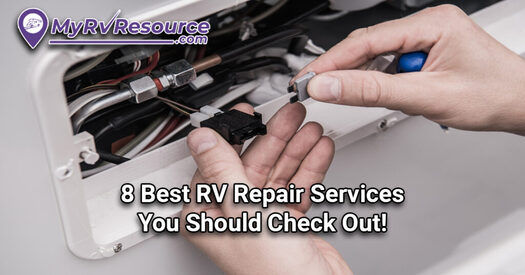
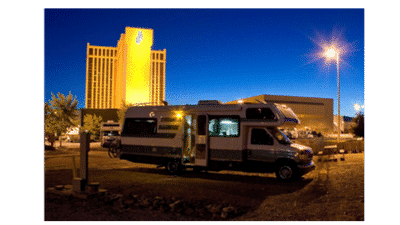
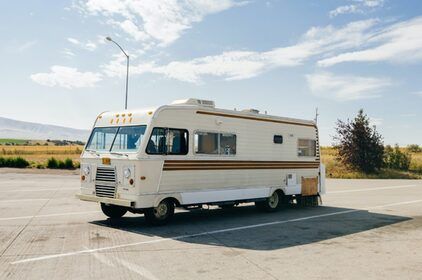
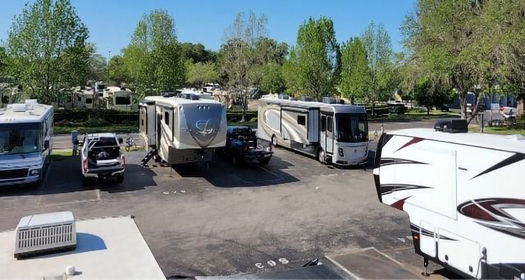
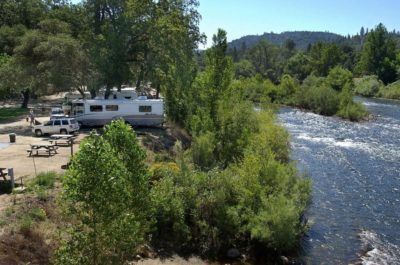
Leave Comment Below
0 Comment(s)